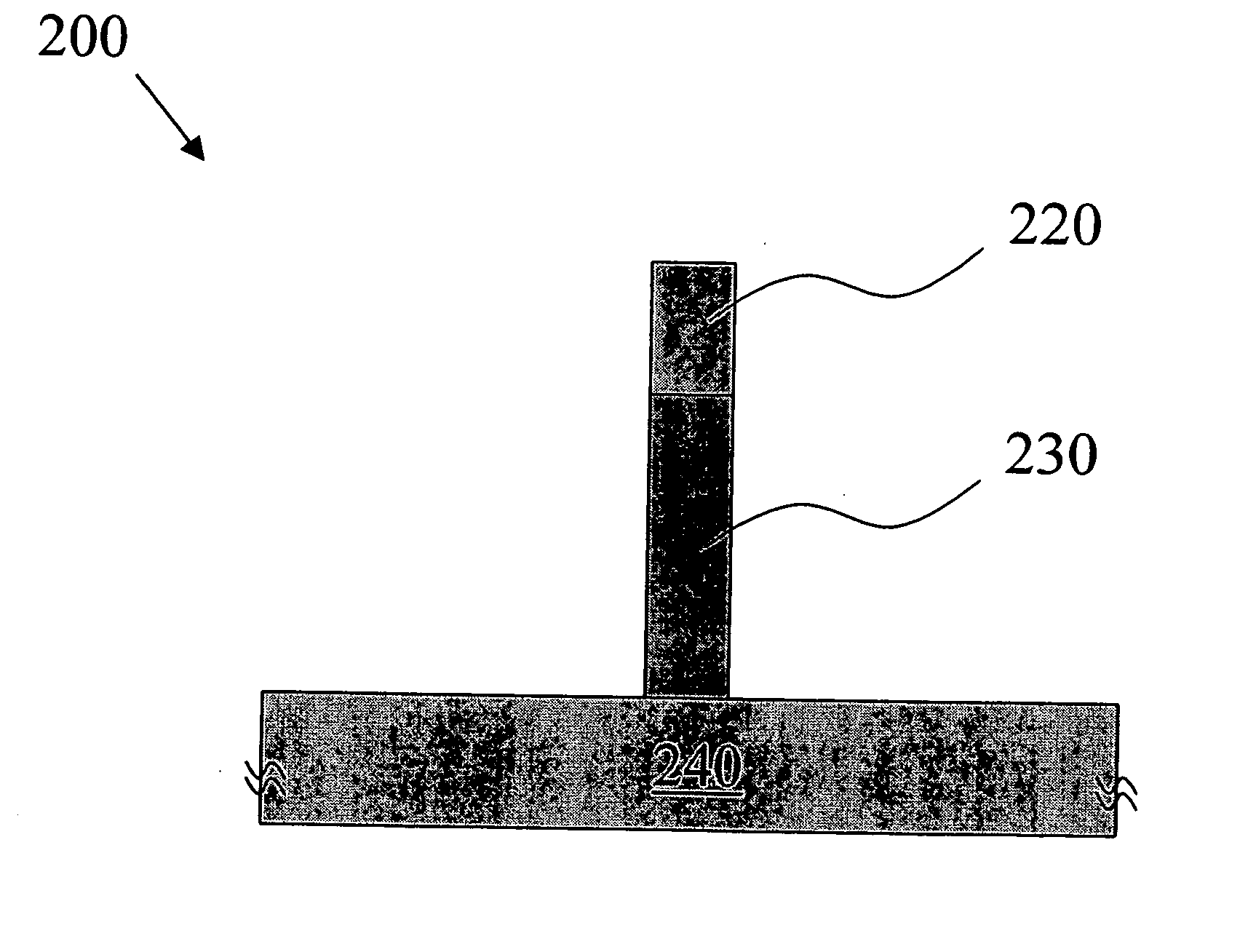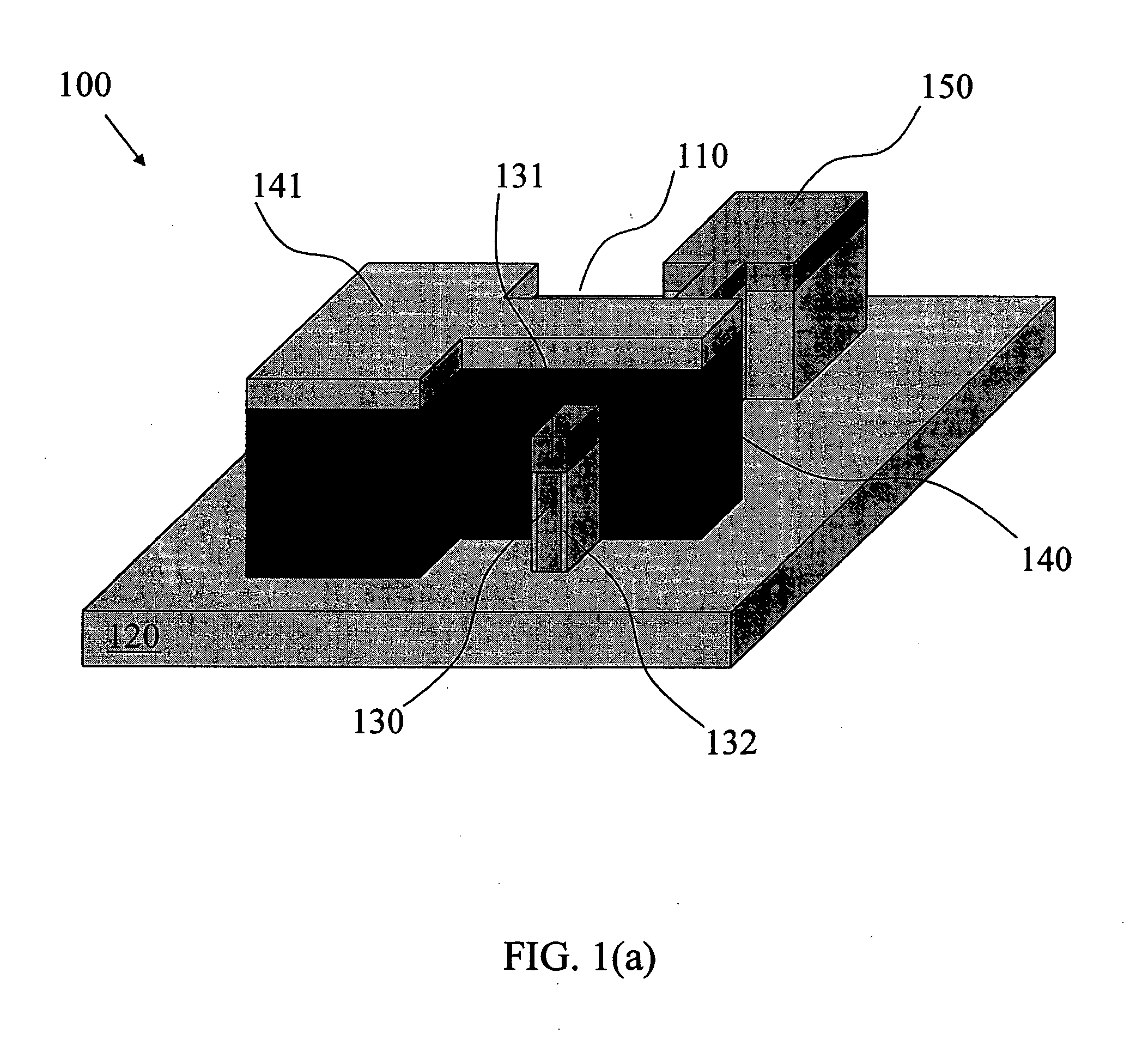Method for patterning fins and gates in a FinFET device using trimmed hard-mask capped with imaging layer
- Summary
- Abstract
- Description
- Claims
- Application Information
AI Technical Summary
Benefits of technology
Problems solved by technology
Method used
Image
Examples
Embodiment Construction
[0035] With reference to FIGS. 1(a) and (b), a portion 100 of an integrated circuit includes a semiconductor device in the form of a Fin Field Effect Transistor 110 which is disposed on a substrate 120. The substrate 120 is preferably a semiconductor-on-insulator (SOI) substrate. Alternatively, substrate 120 can be bulk P-type single crystalline (100) or (110) silicon substrate, or any other suitable material for such transistor 110 and integrated circuit depending on the nature of the transistor or other semiconductor device. On the top of fin 130 and gate 140, there are hard masks 131 and 141, which are preferably silicon dioxide, silicon nitride, or other suitable material for blocking the etching of single-crystal or poly-crystal silicon as will be discussed further below.
[0036] The FinFET 110 can be a P-channel, N-channel, or intrinsic-channel metal oxide semiconductor field effect transistor (MOSFET). The FinFET 110 is preferably embodied as a Double-Gate-MOSFET and includes ...
PUM
 Login to View More
Login to View More Abstract
Description
Claims
Application Information
 Login to View More
Login to View More - R&D
- Intellectual Property
- Life Sciences
- Materials
- Tech Scout
- Unparalleled Data Quality
- Higher Quality Content
- 60% Fewer Hallucinations
Browse by: Latest US Patents, China's latest patents, Technical Efficacy Thesaurus, Application Domain, Technology Topic, Popular Technical Reports.
© 2025 PatSnap. All rights reserved.Legal|Privacy policy|Modern Slavery Act Transparency Statement|Sitemap|About US| Contact US: help@patsnap.com



